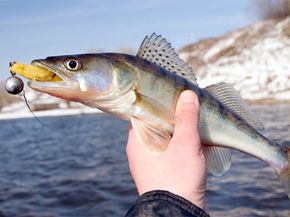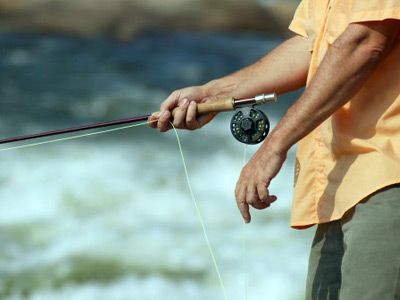The walleye is prized not only because of its tender, flavorful fillets, but also because of its elusive nature. The walleye presents a challenge to even the most experienced fisherman. As any angler worth his salt knows, the harder a fish is to catch, the more fun catching it becomes.
Walleye are hermit-like and prefer never to be seen. When the sun is out, they hang out around underwater structures, sunken islands or weed beds. When they are feeding, they like to do it when it's dark or when the water is cloudy or choppy.
Advertisement
The average walleye is about 14 inches (36 centimeters) long and weighs 1 pound (0.45 kg), which is the best size for eating [source: Hookup Guide Service]. They prefer to be in water that's around 73 degrees Fahrenheit (22.7 degrees Celsius). They feed on insects until they reach a size of about 8 inches (20 centimeters), when they move on to minnows or leaches [source: Vance].
One thing that makes hunting walleye so interesting is the variety of techniques and strategies you can use. Experimentation is definitely encouraged when pursuing these wily creatures.
In this article you'll learn about using downriggers and planer boards to maximize your trolling. You'll even explore the unique experience of night fishing. Let's move ahead to learn how downriggers can give you the edge when fishing for walleye in deep water.
Advertisement



